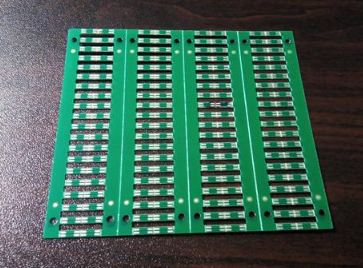1. PCBA surface treatment:
After the PCBA is drilled, there will be residual copper foil burrs attached to the surface of the through hole on the PCBA surface. At this time, the surface of the board will be rough when touched by hand; these burrs will affect the plating quality, so they must be removed; PCBA surface treatment steps are as follows :
(1) Use 400-mesh sandpaper or steel wool to scrub the PCBA surface roundly until the PCBA surface is smooth.
(2) Put the PCBA under the light source to check whether the hole is blocked. If so, use compressed air to spray out the debris in the hole to prevent the hole from being blocked and not conducting after electroplating. (If there is no compressed air, a drill bit smaller than the hole diameter can be used to remove debris
2. Silver glue through hole:

Since the hole wall after the substrate is drilled is not conductive and cannot be electroplated directly, it is necessary to carry out the step of through-hole silver filling first, so that the silver glue is attached to the hole wall for electroplating in the through hole; the steps of the through-hole silver filling glue are as follows :
1. Since the silver glue will precipitate after being left standing, it must be shaken evenly before use to facilitate the next step.
2. Pick up the PCBA so that it is about 30 with the desktop. On top, use a spatula (long strip size of about 10cm * 5cm, which can be cut from the substrate edge material) soaked with silver glue and move it back and forth across the holed area of the board surface to scrape the silver glue into the hole. After one side is completed, move on to the other side.
※The method to confirm whether the silver glue is scraped into the hole is as follows:
(1) When the scraper passes through the hole, you can see that there is a layer of silver glue film in the hole, which means that the silver glue has been poured into the hole
(2) After the through holes are completed on the entire board surface, turn the PCBA over to check whether all the holes have silver glue overflowing the edges of the holes. If there are, continue the through hole operation on the other side. The operation method is the same as the above.
3 Use compressed air to blow out the silver glue plugged in the hole, leaving only a proper amount of silver glue attached to the hole wall. (Note that the air pressure should not be too high to prevent all the silver glue from being blown out; if there is no compressed air equipment, the silver glue can be sucked out by a vacuum cleaner to achieve the same effect).
4 Take a cleaning rag to remove the excess silver glue on the board. Try to wipe the excess silver glue clean to avoid the hardening of the silver glue after the following drying steps and it will take more time to remove.
※If you use toilet paper or the like without a rag, you must make sure that the peeled fiber does not plug the hole. If there is, you can use a thin wire to remove it.
5. Check whether there is silver glue on the wall of each hole, and there is no excess silver glue to plug the hole. If a hole is plugged by silver glue, remove it with a thin wire.
※When checking whether there is silver glue on the wall of the hole, you can place the PCBA in a bright place and tilt the board slightly so that you can see the condition of the hole wall. If there is silver glue adsorption, you can see the reflection of the hole wall.
6. Put the PCBA into the oven for baking, the baking temperature is 110 degree Celsius, and the baking time is 15 minutes. The purpose of baking is to make the silver glue harden and adhere to the wall of the hole. The oven can be a general household type. This step involves the adhesion of the copper in the hole. Cool at room temperature. 7. Use 400-mesh sandpaper or steel wool to scrub the surface of the PCBA thoroughly to remove the hardened silver glue on the surface of the PCBA until the surface of the PCBA is smooth. The baked PCBA is brown. Use fine sandpaper or steel wool to remove the conductive ink that has hardened on the surface of the PCBA. The surface of the PCBA after removal should have a copper metallic luster; if the silver glue on the board is not removed, it will be electroplated The adhesion of electroplated copper on the surface is poor, and the copper surface may peel off or the surface may be uneven. Special attention is required.